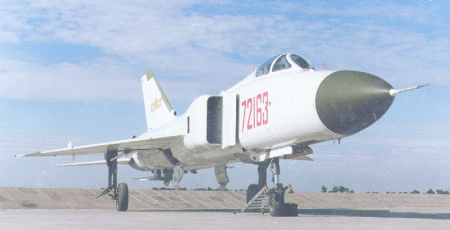
The Chinese Government's recent splitting of colossus Aviation Industries of China (AVIC) into two companies leaves question marks over how the country's huge aerospace industry is to overcome its problems.
The companies were present in their new guise as China Aviation Industry I and II (known as AVIC I and AVIC II) for the first time at Beijing's Aviation Expo/China. AVIC I has taken over the bulk of China's combat aircraft and air weapons production, while AVIC II has absorbed helicopter and general aviation production.
There is some overlap, however, in aero engines and airborne systems and in trainers and military aircraft. AVICI employs 281,000 people, while AVICII has a workforce of 220,000.
Industry observers say the split has left China with two bloated state-owned aviation giants lacking the power to restructure without government approval. The officially cited idea that the division would create a more competitive environment in the Chinese industry is regarded with scepticism by senior industry officials.
"Frankly, I do not know how we will compete," says Tang Xiaoping, director-general of AVIC I's department of marketing and international co-operation.
Military procurement decisions are still likely to be based partly on which of the companies has a "special relationship" with the powerful General Equipment Department of the People's Liberation Army, says Tang. On the other hand, civil aircraft procurement in China has always been initiated by project proposals from the industry, with aircraft allocated by the government to operators without adequate regard for their needs.
One current example is the Civil Aviation Administration of China's decision to allocate two Shanghai Aircraft Manufacturing Factory (SAMF)-built McDonnell Douglas MD-90-30T TrunkLiners to Shenzhen Airlines, which does not want them. The TrunkLiner programme collapsed last year, and no further aircraft will be built by SAMF, while Shenzhen is not a current MD-90 operator.
"My information is that Shenzhen has some difficulty taking these aircraft, and we fully understand that," says Tang. He adds that it will be "up to the government" to change the procurement system, and that the industry itself has little influence to trigger such a change.
Tang says that AVIC I's upper management also recognises the need for radical restructuring within the company. "Certainly, we will rationalise - in the next two years we will see some results," he says.
Initially, changes will be organisational, with manufacturing plants' property and facilities transferred to mother companies AVIC I and II, removing the autonomy the plants have had until now, and allowing more logical co-ordination of resources.
Source: Flight International
















